Available at: https://www.responsiblelending.org/research-publication/shady-side-solar-system-financing
Executive Summary:
Rising energy costs and the increasing environmental threats posed by climate change are causing a growing number of American homeowners to turn to the financial services sector to pay for energy-efficient renovations and upgrades to their homes. This segment of a broader financial market, known as consumer green lending, provides financing for many consumer products designed to have a positive environmental impact and provide potential energy cost savings. As of 2023, 4.4% of all residential homes in the United States had solar power systems installed, with Hawaii, California, and Arizona having the greatest percentages of homes powered by residential solar systems. The solar finance industry is significantly smaller than the mortgage market; however, its reliance on securitization for capital and an estimated $3.89 billion in asset-backed securities represents a growing economic footprint. The clean energy transition in the United States will not succeed and will not be equitable without broad adoption by low-to-moderate income (LMI) consumers. This will require a clear understanding of the consumer benefits of clean energy, as well as effective state and federal consumer protection regulations.
Key Findings:
- Elements of solar financing products and sales processes are identical to those used by predatory subprime lenders in 2007 to target low- and moderate-income and minority borrowers.
- GoodLeap, Sunlight Financial, Mosaic, Sunrun, and Sunnova together account for 80% of the residential solar loan market, according to the most recently available public estimate.
- Solar financing agreements often leave homeowners in a worse economic situation than before the door-to-door salesperson visited them. This solar debt elevates the risk that the consumer will lose their home to bankruptcy or foreclosure.
- The price of the solar system typically is substantially inflated if a consumer finances a system. This allows door-to-door sellers to falsely represent that borrowers are getting financing with a low nominal payment rate when most of the financing cost is hidden in the inflated price of the solar panel system. This markup amount is not revealed to the homeowner, and installers are often forbidden from disclosing the markup.
Commentary:
For consumer bankruptcy practitioners, the treatment of solar panels and their financing remains a tangle of unresolved issues. In some cases, panels are clearly fixtures subject to mortgage liens; in others, they remain personal property under a UCC-1 filing. Lease and PPA arrangements add another layer, often looking less like ownership and more like a burdensome executory contract. As the CRL report shows, the sales and financing practices themselves can be fertile ground for Truth in Lending, UDTPA, or Holder Rule claims—if the forced arbitration clauses don’t shut the courthouse door.
The confusion shows up in bankruptcy schedules and plan treatment. Is the panel lender a mortgage creditor whose collateral is part of the home? Or a creditor secured by personal property with an inflated claim that could be bifurcated or crammed down? Should the system be assumed, rejected, or stripped? And when the financing includes hidden “dealer fees” or an unperfected lien, can we challenge the claim entirely? Courts vary widely in approach, and the law has not settled—meaning that debtors with identical panels may get wildly different outcomes depending on jurisdiction, trustee, and even how the panels were bolted down.
Given the aggressive and sometimes predatory nature of solar financing, consumer bankruptcy attorneys should:
- Scrutinize loan documents for arbitration clauses, hidden fees, and inflated prices used to mask interest rates.
- Investigate lien perfection—many UCC filings describe the panels but don’t comply with fixture filing requirements.
- Consider whether claims are subject to setoff or recoupment based on state UDAP laws or the FTC Holder Rule.
- Prepare to educate the court on why a purported “fixture” might still be personal property—and why that matters for valuation and claim treatment.
- Subject solar panel finance creditors to discovery to obtain accurate details about both their lending practices and the resale value for used solar panels.
In short, solar panel financing in consumer bankruptcy is like the early days of mortgage securitization litigation—confusing, inconsistent, and ripe for both creditor overreach and debtor defense. Until appellate guidance or legislative reform arrives, practitioners will need to navigate a patchwork of interpretations and be ready to litigate classification, lien validity, and consumer protection violations alongside the usual plan feasibility and disposable income issues.
Finally, CRL and the authors of this report would perform a great public service by extending their investigation into how solar panel debt is treated in consumer bankruptcy cases nationwide. Review of the wealth of data available in bankruptcy cases through PACER could shed light on the inconsistent treatment of these claims, expose whether predatory financing survives discharge, and inform both policymakers and courts on how best to protect debtors caught between green energy aspirations and high-pressure, high-cost financing schemes.
NACA Webinar: What to Do with Solar Panels in Bankruptcy.
With proper attribution, please share this post.
To read a copy of the transcript, please see:

Blog comments